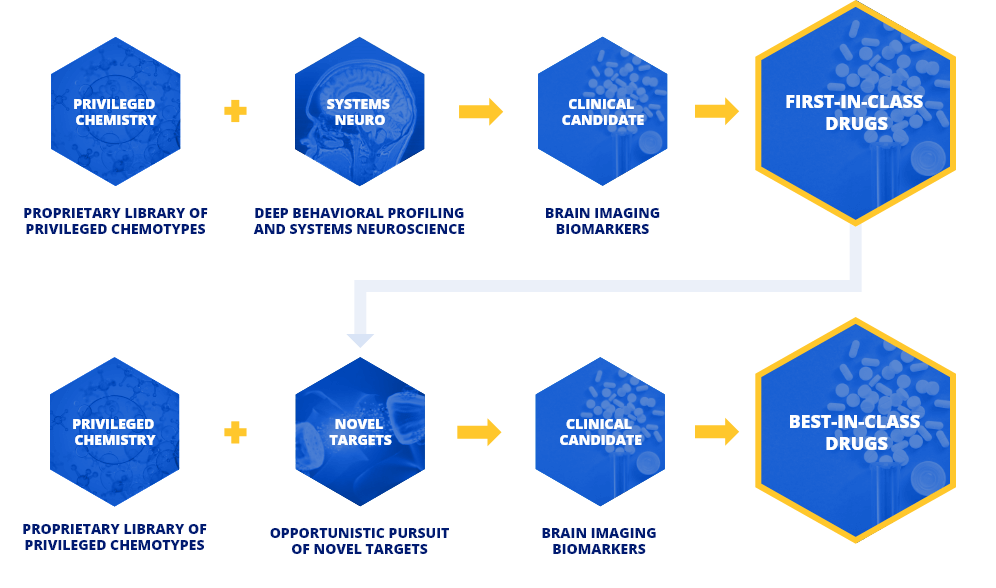In following a single-target approach, pharmaceutical companies have largely overlooked the fact that, unlike other illnesses, brain disorders are often rooted in dysfunctional circuits, not single-receptor targets. So, industry efforts to find drugs based on targeting single receptors have largely failed, thereby stalling the development of new CNS drugs. Our systems neuroscience approach offers hope for more drug discoveries than the industry has had in decades, because our process focuses on dysfunctional brain circuits, allowing us to more effectively discover drugs having novel mechanisms-of-action.
ADEPt™ (Adaptive Design Engineering for Privileged Structures) rationally designs privileged chemotypes with CNS activity, allowing us to accelerate drug discovery. Proprietary computational filters identify chemical structures that have properties correlated with brain circuit and behavioral activity. This results in privileged chemotypes that are structurally novel, drug-like and easily optimizable.
We can dramatically improve the typical 0.1% hit rate for screening in target-based drug discovery programs to 20% to 40% by designing privileged chemotypes with properties that make them more likely to be privileged. We start with compounds that are more drug-like and have fewer problems to fix during optimization. As smaller, more soluble molecules, they are more likely to cross the blood-brain barrier.
An important benefit of this design process is that Blue Oak compounds occupy a substantially different region of chemistry space compared to historical corporate compound collections. Modern corporate compound collections tend to reside in densely populated regions of chemical space that focus on specific, single targets for various therapeutic areas such as oncology, immunology, etc. In contrast, ADEPt™ selects for molecules that are in scarcely populated, but biologically relevant, regions of chemistry space that allows for activity at multiple drug targets. Since our compounds have not been extensively screened by other companies, Blue Oak is able exploit a unique intellectual property space.
Our scalable systems neuroscience platform for brain disorder research can yield both first-in-class and best-in-class CNS drugs by combining three key elements.

Our target-agnostic approach identifies new polypharmacology mechanisms that can treat illnesses with first-in-class drugs. New mechanisms can then accelerate the design of more drugs in the same class and Blue Oak creates them at a more efficient rate, thereby increasing treatment options for brain disorders.
For investment or partnership opportunities or to learn more about our clinical programs, contact our team today.
CONTACT US